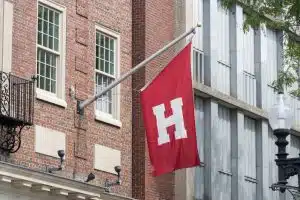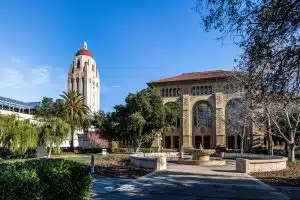Discover the Benefits of Applying to Colleges with Early Decision
The road to college can be filled with anticipation and anxiety, stages of joy, and instances of doubt. One of the major decisions that can significantly impact this journey is whether to apply to a college under the Early Decision program or to take the Regular Decision route.
In this article, we will delve into the benefits and considerations of applying to colleges with Early Decision and offer practical advice on how to navigate this often complicated process.
Understanding Early Decision: A Brief Overview
Early Decision (ED) is a binding agreement between the college and the student. When a student applies under an ED program, they agree to attend that college if accepted. Generally, ED application deadlines are in November of the student’s senior year, and decisions are typically announced in December.
This application option is different from Early Action (EA), another early application process where the student is not obligated to attend if accepted. Every student must carefully evaluate the ramifications of this agreement before opting for it.
Early Decision can be a strategic choice for students who have a clear top-choice college and are confident in their decision. By applying early, students demonstrate their strong interest and commitment to the college, which can positively impact their chances of admission. However, it is important to note that Early Decision is a binding agreement, and students must be prepared to enroll at the college if accepted.
One advantage of Early Decision is the potential for a higher acceptance rate compared to Regular Decision. Colleges often fill a significant portion of their incoming class through the Early Decision pool, which means that competition may be slightly less intense than in the Regular Decision round. Additionally, applying early allows students to receive their admissions decision sooner, providing them with more time to plan for their college experience.
The Difference Between Early Decision and Regular Decision
While both Early Decision and Regular Decision ultimately serve the purpose of getting students into college, there is a fundamental difference. The key distinction lies within the commitment level. With ED, the student promises to enroll if admitted, while in Regular Decision, the student can compare offers from all colleges before committing to one.
Regular Decision deadlines are usually later, often in January or February, with decisions released around March or April. Thus, there is a significant time difference between both decisions, setting the tone for other advantages and considerations closely related to Early Decision.
One advantage of Regular Decision is the flexibility it offers to students. By applying Regular Decision, students have the opportunity to explore different college options, compare financial aid packages, and make a more informed decision. This can be particularly beneficial for students who are unsure about their top-choice college or who want to keep their options open until they receive all their admissions decisions.
Another advantage of Regular Decision is that students have more time to improve their academic profile. If a student’s grades or test scores improve during their senior year, they can include these updated achievements in their Regular Decision applications, potentially strengthening their candidacy for admission.
However, it is important to note that the acceptance rates for Regular Decision are typically lower than those for Early Decision. As colleges have already admitted a significant number of students through the Early Decision round, there are fewer spots available in the Regular Decision pool. This increased competition can make it more challenging for students to secure admission through Regular Decision.
In conclusion, both Early Decision and Regular Decision have their own advantages and considerations. Students must carefully evaluate their priorities, college preferences, and future plans before deciding which application option is the best fit for them. It is crucial to seek guidance from college counselors, teachers, and parents to make an informed decision and navigate the college application process successfully.
The Advantages of Early Decision Applications
Increased Acceptance Rates
Many colleges tend to have higher acceptance rates for Early Decision (ED) applicants compared to Regular Decision applicants. This is due to many factors, including the reduced applicant pool and the demonstrated interest from the students.
When a student applies for ED, it indicates a strong preference for that institution, which can positively influence admission chances.
Furthermore, colleges often view Early Decision applicants as more committed and dedicated to attending their institution. This commitment is seen as a valuable asset, as it shows that the student is willing to make a binding decision early on, which can be advantageous for both the student and the college.
Additionally, the smaller pool of Early Decision applicants allows admissions officers to spend more time reviewing each application thoroughly. This means that the strengths and unique qualities of each applicant can be better appreciated, potentially leading to a higher acceptance rate.
Reduced Stress and Uncertainty
Early Decision applications may also reduce a student’s stress and uncertainty. With decisions typically released in December, those accepted can relax knowing they have a secured place at a college they love. This allows the student to focus more on finishing their senior year strong without the added worry of college admissions.
Moreover, by applying early, students have the opportunity to receive their admissions decision before the regular decision deadlines of other colleges. This early knowledge can alleviate the anxiety associated with waiting for multiple college decisions and allows students to plan their future accordingly.
Additionally, early acceptance can provide a sense of relief and motivation for students, as they can start envisioning their college experience and begin planning for the next chapter of their lives.
More Time to Prepare for College
Applying via Early Decision not only ends the admission process sooner but also gives students more time to prepare for their college experience. From researching housing options to sorting out financial aid, students have several months to manage these tasks once they’ve been admitted.
Having this extra time can be particularly beneficial for students who may need to make arrangements for housing, especially if the college requires students to apply for on-campus accommodation separately. It allows them to thoroughly explore their options and make informed decisions.
Furthermore, students can use this additional time to familiarize themselves with the college’s resources, academic programs, and extracurricular opportunities. They can reach out to current students or alumni, attend virtual events, and gather information that will help them make a smooth transition to college life.
Additionally, students can take advantage of the extended period to finalize their financial aid plans. They can compare different scholarship opportunities, complete the necessary paperwork, and ensure they have a clear understanding of their financial responsibilities.
In conclusion, Early Decision applications offer several advantages to students. They can increase acceptance rates, reduce stress and uncertainty, and provide students with more time to prepare for their college experience. However, it is important for students to carefully consider their options and make an informed decision that aligns with their academic and personal goals.
The Potential Drawbacks of Early Decision
Binding Commitment: What Does it Mean?
As previously mentioned, an Early Decision agreement is binding. This implies the student must enroll in that college once admitted. It can be a disadvantage for those who want to keep their options open and compare financial aid packages from various colleges.
When a student applies through Early Decision, they are essentially making a commitment to attend that particular college if accepted. This can be a daunting decision to make, especially for students who are unsure about their future career paths or have not had the opportunity to explore different colleges and campuses.
The binding nature of Early Decision can restrict a student’s ability to consider other options and make an informed decision about their higher education.
Furthermore, the binding commitment of Early Decision can create a sense of pressure and anxiety for students. They may feel obligated to accept an offer from a college, even if they have reservations or concerns about the institution. This can lead to a less-than-ideal college experience and potentially impact a student’s academic and personal growth.
Financial Aid Considerations
Although there’s a pledge to attend and pay for college, students can be released from their ED agreement if their financial aid package falls significantly short of their demonstrated need. However, before applying for Early Decision, it’s crucial to understand its implications on financial aid.
One of the potential drawbacks of Early Decision is the limited opportunity to compare financial aid packages from different colleges. When students apply through Early Decision, they are committing to attend a specific college without having the chance to evaluate other financial aid offers.
This can be a significant disadvantage, especially for students who come from low-income backgrounds and heavily rely on financial aid to afford their education.
Additionally, the timing of Early Decision can also impact a student’s financial aid situation. Since Early Decision applications are typically due earlier than regular decision applications, students may not have all the necessary financial information to accurately assess their financial needs.
This can result in a less favorable financial aid package compared to what they might have received if they had applied through regular decision.
It is essential for students and their families to carefully consider the financial implications of Early Decision before making a binding commitment. Exploring different financial aid options, understanding the potential limitations of Early Decision, and seeking guidance from financial aid advisors can help students make an informed decision about their college applications.
Tips for Making an Early Decision Application
Making the decision to apply early decision (ED) to a college can be a big step in your college application process. It shows your commitment and dedication to a particular institution. However, before you dive into the ED application process, there are a few things you should consider to ensure that you are making the right choice for yourself.
Assessing Your College Preferences
Before applying ED, it is important to take the time to introspect and prioritize your preferences. Think about what factors are most important to you in a college experience. Consider the curriculum offerings, campus life, location, size of the college, and opportunities for co-curricular activities.
Reflect on your own personal goals and aspirations and how a particular college aligns with them. If you find that a college truly checks all your boxes and you are genuinely passionate about it, then applying to ED could be a fantastic option for you.
When assessing your college preferences, it can be helpful to visit campuses and attend information sessions or virtual tours. This will give you a firsthand experience of what the college has to offer and help you make an informed decision.
Preparing a Strong Application
Once you have decided to apply to ED, it is important to invest time and effort into preparing a strong application. This means highlighting your strengths and unique attributes that make you stand out from other applicants. Take the time to reflect on your experiences, achievements, and personal qualities that make you a great fit for the college.
When preparing your application, pay attention to detail. Make sure your essays are well-written, showcasing your personality and passion for the college. Take the time to proofread and edit your application to ensure that it is free from any errors or typos. Consider reaching out to teachers, mentors, or college counselors for feedback and guidance.
Meeting Early Decision Deadlines
One of the key aspects of applying ED is meeting the early decision deadlines. ED application deadlines typically fall in November, a few months before Regular Decision deadlines. This means that you will need to manage your time effectively to ensure that your application is thorough and submitted on time.
Start early and create a timeline for yourself to stay organized. Break down the application process into smaller tasks and set deadlines for each task. This will help you stay on track and ensure that you are not rushing through your application at the last minute.
Additionally, make sure to gather all the necessary documents and materials ahead of time. This includes your transcripts, test scores, letters of recommendation, and any other required documents. Double-check the application requirements and make sure you have everything ready to submit before the deadline.
By managing your time effectively and staying organized, you can ensure that your ED application is completed with care and submitted on time.
Overall, making an early decision application requires careful consideration, preparation, and meeting deadlines. By assessing your college preferences, preparing a strong application, and managing your time effectively, you can increase your chances of a successful ED application. Good luck!
Navigating the Early Decision Process
Communicating with Your Guidance Counselor
Your high school guidance counselor can be a tremendous resource through your Early Decision journey. They can provide valuable insights into the application process, guide you with suitable college options, and help you manage your expectations realistically.
Understanding Admission Policies
Each institution may have different policies regarding Early Decision applications. It is essential to research these policies and requirements before submitting your application. Understanding all details can help avoid any possible confusion or misunderstanding in the future.
Dealing with Early Decision Results
Being accepted or rejected under the ED program can invoke intense emotions. It is important to handle these emotions maturely and remember there are many paths to achieve your goals.
If you are not accepted, utilize the experience to improve your Regular Decision applications. And if accepted, take the time to bask in the accomplishment and prepare for your college journey ahead.
Ultimately, the choice of whether to apply Early Decision depends on individual circumstances and preferences. It’s an excellent opportunity if a certain college is your absolute first choice, but it does come with its own set of considerations. We hope that this article helps clarify these aspects and assuage some of the anxiety associated with the college application process.
Having all the necessary information is important before choosing any course of action. AdmissionSight is always here to assist you with any questions or concerns. We have more than ten years of expertise assisting students in successfully navigating the challenging admissions process.
Consult with AdmissionSight and find out what we can do to help you get into the school of your choice by ensuring that you are sufficiently aware and well-prepared for the application process.










































